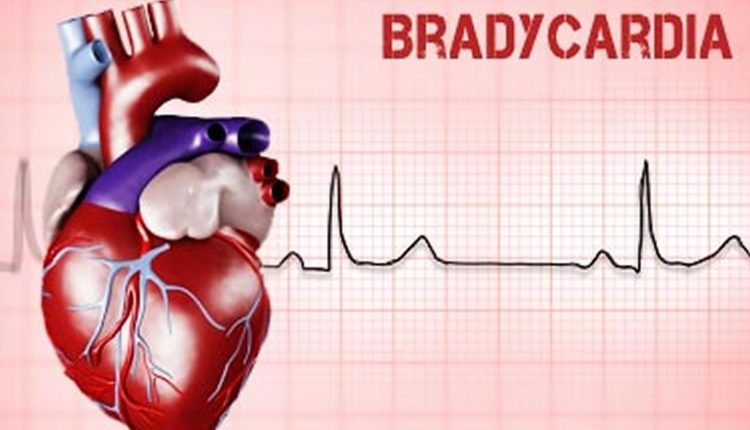
Heart, bradycardia: what it is, what it involves and how to treat it
Bradycardia is defined as a heart rate < 60 bpm.bThis is a functional definition–based on function–because usually a patient isn’t symptomatic until < 50 bpm
Once bradycardia is noted, you should monitor:
- Airway control: maintain a patent airway; assist breathing as necessary.
- Cardiac rhythm, assessed via cardiac monitor.
- Blood pressure, an
- O2 sat: give oxygen if hypoxemic: hypoxemia is a common cause of bradycardia.
Establish IV/IO access.
12-lead ECG if available, but not if it delays therapy.
Bradycardia, Stable or Unstable?
UNSTABLE:
Unstable, in our usage, means the patient is in danger of suffering harm if the present condition continues.
Unstable symptoms could be, among others,
- hypotension,
- chest pain,
- shortness of breath,
- altered mental status or weakness.
PROTOCOL: If the bradycardic patient is UNSTABLE, atropine is the initial treatment of choice.
►Atropine is delivered via 1 mg IV/IO push and may be repeated every 3-5 minutes up to a total max dose of 3 mg (3 doses, total).
If atropine does not relieve the symptoms of unstable bradycardia, transcutaneous pacing is the next intervention followed by the use of Dopamine or Epinephrine as second-line drugs (either, not both).
TRANSCUTANEOUS PACING: Symptomatic unstable bradycardia refractory to all medications should warrant consideration of transcutaneous pacing.
For most adults, you should set the pacer rate at 60-70 bpm and start increasing energy levels. For pediatric patients, a faster heart rate (>80) may be needed to reverse a compromised cardiovascular condition. The pacer will create a sharp vertical spike on the EKG tracing.
When pacing a patient, “electrical capture” is the goal: it is defined as the presence of a QRS complex following each signal spike from the pacer on the EKG. “mechanical capture” is another term that is commonly used, it is defined as the presence of a palpable pulse following each QRS complex on EKG.
If you choose to use Epinephrine, the recommended dosage is an infusion at 2-10 mcg/minute titrated to a heart rate of 60bpm.
Dopamine is less commonly used but may be initiated at 5-20mcg/kg/min also titrated to a heart rate of 60bpm, note that dopamine is dosed based on weight!
If you determine that these “unstable symptoms” are secondary to the bradycardia itself, the AHA wants you to intervene and stabilize them.
STABLE :
If the patient is stable, proceed according to the protocol or online medical control and keep watch for signs of deterioration.
- No hypotension,
- No altered mental status,
- No signs of shock,
- No ischemic chest pain,
- No acute heart failure.
PROTOCOL: Continue to monitor for reversible causes (Hs and Ts):
H’s
Hypovolemia – Not enough volume.
Hypoxia – Not enough oxygen.
Hydrogen Ion Excess – Acidosis (low pH).
Hypoglycemia – insufficient blood sugar. Hypokalemia – electrolyte imbalance – not enough potassium.
Hyperkalemia- electrolyte imbalance – too much potassium.
Hypothermia – exposure to cold resulting in damage.
T’s
Tension Pneumothorax – Air trapped in the pleural space.
Cardiac Tamponade – Fluid in the sac around the heart, restricting contraction.
Toxins – Your patient has been exposed to a poison or toxic substance.
Thrombosis – A blood clot has clogged an artery, cutting off distal circulation..
Trauma.
Read Also:
Emergency Live Even More…Live: Download The New Free App Of Your Newspaper For IOS And Android
Defibrillator: What It Is, How It Works, Price, Voltage, Manual And External
The Patient’s ECG: How To Read An Electrocardiogram In A Simple Way
Signs And Symptoms Of Sudden Cardiac Arrest: How To Tell If Someone Needs CPR
Inflammations Of The Heart: Myocarditis, Infective Endocarditis And Pericarditis
Quickly Finding – And Treating – The Cause Of A Stroke May Prevent More: New Guidelines
Atrial Fibrillation: Symptoms To Watch Out For
Wolff-Parkinson-White Syndrome: What It Is And How To Treat It
Do You Have Episodes Of Sudden Tachycardia? You May Suffer From Wolff-Parkinson-White Syndrome (WPW)
Transient Tachypnoea Of The Newborn: Overview Of Neonatal Wet Lung Syndrome
Tachycardia: Is There A Risk Of Arrhythmia? What Differences Exist Between The Two?
Heart Failure: Causes, Symptoms, Tests For Diagnosis And Treatment
Ischaemic Heart Disease: Chronic, Definition, Symptoms, Consequences
Heart Patients And Heat: Cardiologist’s Advice For A Safe Summer
Silent Heart Attack: What Is Silent Myocardial Infarction And What Does It Entail?
What Is Bradycardia And How To Treat It



